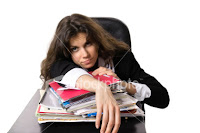 A critical part of any time management system is the activity of Listing.
A critical part of any time management system is the activity of Listing.
In the prior component, Scheduling, I addressed the power of expanding the use of a schedule from a mere Appointment Calendar to a possibly useful planner of each and every kind of activity that places a time demand on a user.
As useful as a schedule is, however, it has its limits.
Any user that tries to schedule too many items into a calendar will ultimately cause their calendar to fail from the weight of too many time demands. At the moment, there is no calendaring system or technology that exists that will not fail from over-scheduling.
Definition
Listing involves putting a time demand on a list that is created to pull together items that share some common attribute.



 Scheduling is one of the major activities that take place in any time management system.
Scheduling is one of the major activities that take place in any time management system.
 Often, critical information enters a capture point that needs to be stored for later use. It may come as part of a time demand, such as a note placed on our desk that says “Call Suzie tomorrow at 555-1616.” This particular note has both a time demand plus a critical piece of information.
Often, critical information enters a capture point that needs to be stored for later use. It may come as part of a time demand, such as a note placed on our desk that says “Call Suzie tomorrow at 555-1616.” This particular note has both a time demand plus a critical piece of information. During the act of
During the act of  Tossing is one of the components that can directly follow
Tossing is one of the components that can directly follow 

